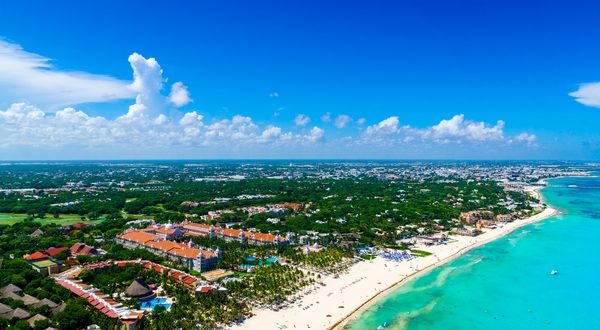[ad_1]
The Mexican state of Quintana Roo recently created a new Tourism Promotion Council that’s charged with promoting many of the lesser-known travel destinations located on the Yucatan Peninsula.
A state of 11 municipalities and about 1.3 million people, Quintana Roo’s most famous destinations include such household names as Cancun, Cozumel and Tulum.
But, there are also many stunning lesser known places to visit in Quintana Roo, such as Holbox, Bacalar and Mahahual.
The person charged with raising the profile of these smaller, under-the-radar destinations is Darío Flota, the newly appointed head of the state’s Tourism Promotion Council.
If there’s anyone who can put places like Holbox on the map with tourists, it is Flota. He previously served as director of the Promotion Trust of the Riviera Maya and Cozumel, a position in which he was lauded for his great success.
Appointed to his new role by the governor of Quintana Roo, Flota will be responsible for developing distinct, individual strategies to promote each of the tourist-friendly destinations in the state. That effort will involve developing identities for numerous cities, towns and island communities and establishing their presence on social networks—all of which will be managed by Flota’s new office and a staff of about 30 people.
The new council also comes at a time when many of the destinations within Quintana Roo are growing, and with the leadership provided by Flota and the tourism council, the hope is that that trajectory can be more effectively supported.
“The challenge is to try to put in order all of the actions necessary to achieve the kind of success we have in Cancun and Riveria Maya. That’s the challenge, that’s one of the main purposes of this council,” Flota told TravelPulse during an in-depth interview. “We have been working on plans for every destination to identify their main attractions and the key differences between them and the others, trying to identify who would be interested in visiting those destinations.”
While Flota and his team have been busy creating marketing plans for each tourist destination in the state, he also pointed out that some of the communities are more ecologically fragile than others and will not be able to accommodate a significant increase in tourism.
One of the region’s gems is Holbox, an island in the north of the state that’s only reachable by ferry from Cancun (about a one and a half hour ride).
The island is known for its magnificent beaches, freshly caught lobster and for being a place where visitors can regularly interact with whale sharks.
There’s currently about 1200 hotel rooms in Holbox, primarily small hotels with about 30 guest rooms apiece. And that fact is not likely to change, in large part because of the limited infrastructure and fragility of the island, said Flota.
“There is a limit, a load capacity for visitors in terms of services like electricity and drinking water,” explained Flota, who added that the charming island is already becoming an increasingly popular destination for international travelers.
In the state’s capital of Chetumal, meanwhile, Flota said the tourism council’s efforts are focused on attracting convention visitors. The city is home to an impressive, modern convention center. Chetumal is also popular thanks to its gastronomy offerings, Flota said.
There are currently about 4,000 hotel rooms in the capital city, a figure that will likely increase in the coming years.
The number of hotel rooms in the state as a whole is also set to increase substantially. Currently, there are about 100,000 hotel rooms in Quintana Roo, and there are 30,000 rooms in the pipeline, scheduled to be built over the next 10 years.
“I think that’s proof of the confidence investors have in this area,” said Flota.
That belief in Quintana Roo appears to be well-placed. The state closed last year with an occupancy rate of more than 83 percent. In addition, Quintana Roo has an admirable record of attracting the same visitors over and over again.
“Fifty-two percent of visitors are repeat vistors—people who are coming for a second time. That means they are people who have come to the state, enjoyed their vacations and decided to come back,” said Flota. “And for those who come every year, they always find new things – new restaurants new parks and new attractions.”
[ad_2]You can read more of the news on source
 Travelsmart
Travelsmart



